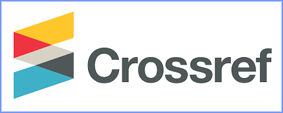Author Guidelines
Author Guidelines
Journal of Engineering Science and Technology Management (JESTM)
ISSN Online: 2828-7886
Website: https://jes-tm.org/index.php/jestm/index
1. Manuscript Submission
-
Manuscripts must be original, unpublished, and not under review elsewhere.
-
All manuscripts must be submitted through the journal’s online submission system.
-
The manuscript should be written in English, using the provided MS Word template, and follow the IMRaD structure: Introduction, Methodology, Results and Discussion, and Conclusion.
2. Formatting Requirements
-
Paper size: A4 (21 x 29.7 cm)
-
Margins: Top 2.8 cm, Bottom/Left/Right 2.4 cm
-
Font: Times New Roman, 11 pt
-
Columns: Two-column format (except abstract and metadata)
-
Spacing: Single spacing; first line of each paragraph should be indented
-
Do not include headers, footers, or page numbers (handled by the editor)
3. Article Structure
3.1 Title and Author Information
-
Title: Max. 15 words, Title Case, Bold, 20 pt font
-
Authors: Full name(s) in 12 pt bold; affiliation(s) in 11 pt regular
-
Include email addresses and clearly indicate the corresponding author with an asterisk (*)
3.2 Abstract and Keywords
-
Abstract: 150–200 words, Times New Roman 10 pt, justified
-
Must include: (1) Objective, (2) Method, (3) Results, (4) Conclusion
-
Keywords: 3–5 keywords in lowercase, separated by commas
3.3 Main Sections
Use the following standardized structure:
-
Introduction
-
Present background, research gap, objectives, and significance.
-
-
Literature Review
-
Discuss theories, frameworks, and related works; identify the novelty of the study.
-
-
Research Methodology
-
Clearly explain design, participants, instruments, procedures, and analysis techniques.
-
Quantitative: include statistical tests and significance levels.
-
Qualitative: describe data collection, coding, and trustworthiness strategies.
-
Include instrument tables when necessary.
-
-
Results and Discussion
-
Present and interpret findings using tables and figures.
-
Tables: caption above, figures: caption below.
-
Refer to them as Table 1, Fig. 2, etc. Use consistent formatting.
-
Discussion should relate results to objectives and relevant literature.
-
-
Conclusion
-
Summarize key findings linked to objectives.
-
Highlight contributions and suggest implications or future work.
-
Avoid repeating raw data.
-
-
Acknowledgement (if any)
-
Mention funding support and contributors.
-
-
References
-
Use APA 7th edition style.
-
Minimum 15 references; 75% must be published within the last 10 years.
-
Prefer Scopus/Web of Science-indexed journals.
-
Use reference manager (e.g., Mendeley, Zotero, EndNote).
- Example :
Author, A. A., & Author, B. B. (Year). Title of the article. Title of the Journal, Volume(Issue), page range. https://doi.org/xxxxx
-
4. Equations, Figures, and Tables
-
Equations: Use Equation Editor, number on the right as (1), and refer to as Eq. (1)
-
Figures and tables: Insert as high-resolution PNG/TIFF; avoid linked objects
-
Group complex figures in MS Word to prevent distortion during editing
5. Plagiarism and Ethics
-
Manuscripts must be free of plagiarism (≤ 20% similarity score)
-
Authors are responsible for the ethical treatment of human/animal subjects (if applicable)
6. Review Process
-
Submitted articles undergo a double-blind peer-review process
-
Authors may be asked to revise manuscripts based on reviewer/editor feedback
-
Decision outcomes: Accept, Minor Revision, Major Revision, or Reject
7. Copyright and Licensing
-
Articles accepted and published in JESTM are under open access (CC BY license).
-
Authors retain copyright but must allow publication and archiving by the journal.









